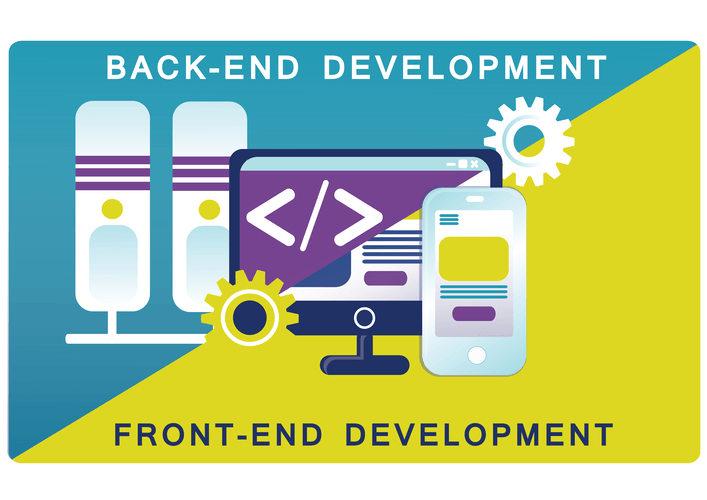SQL databases implement the Structured Query Language (SQL) to work with data. SQL is typically more comprehensible than traditional code as it utilizes English keywords like SELECT, INSERT, UPDATE, DELETE along with boolean operators like AND and OR. SQL supports many powerful features for working with data, such as the JOIN clause, which a developer can use to perform complex queries and retrieve data from multiple tables as one result. SQL databases are classified as relational databases which follow the relational model proposed by E.

However, all SQL databases support the core ANSI/ISO language elements. As delineated in many examples above, traditional RDBMSs are also rebranding as generalized databases and connecting with NoSQL. Clearly both paradigms remain valid in the modern transition to the cloud. It really comes down to the type of application you are building and the data requirements it entails.
What is the Fastest Programming Language?
NoSQL databases scale better horizontally, which means one can add additional servers or nodes as needed to increase load. Because SQL databases have a long history now, they have huge communities, and many examples of their stable codebases online. There are many experts available to support SQL and programming relational data. SQL databases are valuable in handling structured data, or data that has relationships between its variables and entities. SQL and NoSQL are two different approaches to storing and manipulating data.
The NoSQL databases can be totally exploited in case of the data management for the decentralized data. One can easily take the grasp on the query with the NoSQL database. A developer can easily learn it because it is easier than the SQL database. In most of the cases, a database can be used to structure all the data. The alternate of SQL can provide more conveniences in terms of handling changes.
Advantages and disadvantages of NoSQL databases
An index is a data structure that maps values of one or more columns to a physical location of the corresponding data on the disk. It increases the efficiency of database data retrieval operations. MongoDB uses MongoDB Query Language (MQL) which allows you to interact with the document-oriented structure of MongoDB.

MongoDB automatically triggers a failover that elects a new primary node if a primary node becomes unavailable. For such a system, it is important that items be removed from inventory as soon as they are purchased so as to prevent overstock or understock issues. When an order is placed, the inventory can be updated, a new shipment data object can be created, payment information can be updated, and the customer information can be updated. All of these related tables will be updated in unison in order for the transaction to complete. In this article, we will take a deep dive into the pros and cons of SQL and NoSQL databases. There are two main categories of database in use in the development world today, commonly referred to as SQL and NoSQL.
SQL Basics
Although similar to SQL, it has additional features like an extensible type system, functions, and inheritance. However, PostgreSQL is still compatible with standard SQL, so you can use SQL queries as well. A common misconception is that it is bad to use both technologies together; as a matter of fact, you can use both together, such that each database type play to its strengths. Many companies use both databases within their cloud architecture.

The availability of resources for learning NoSQL is still limited compared to SQL when considering online learning resources. However, the vendor or organization behind a specific NoSQL database often actively supports and engages with the community. Thus, NoSQL databases are typically well-suited for highly scalable applications. You can check out the Where to Use MongoDB white paper to help you determine if MongoDB or another database is right for your use case. To learn about the document model and how it compares to the relational model. This can be extremely inefficient when you have to query a large database table with several million rows.
Should You Choose SQL or NoSQL?
The key-value, document, and column-family databases all make use of this more complex record in a single unified data store. SQL is the programming language used to interface with relational databases. (Relational databases model data as records in rows and tables, with logical links between them). NoSQL is a class of DBMs that are non-relational and generally do not use SQL. From analysts and engineers to IT decision-makers, many are familiar with Relational Database Management Systems (RDBMS) and the Structured Query Language (SQL) used to interact with them.
- The NoSQL database works wonders with unstructured data and is schema-less.
- In short, relational databases that conform to ACID provide the guarantee of data validity despite any unexpected errors.
- SQL databases make it simpler to work with structured data in a database through CRUD operations.
- You have to use predefined schemas to determine your data structure before you can work with it.
On the other hand, NoSQL databases shine when dealing with unstructured or semi-structured data, offering high scalability and flexibility. Ultimately, the choice between SQL and NoSQL depends on the specific needs and goals of your project. SQL and NoSQL are two different database technologies, each with its own set of strengths and weaknesses. SQL requires structured and tabular data and supports complex queries. On the other hand, NoSQL offers flexibility, scalability, and support for various types of data.
When to use SQL vs. NoSQL
In MongoDB, the basic unit of storage is a serialized JSON document. A document is a JSON data structure that contains key-value pairs. In these pairs, keys are strings and the values are types of data. MongoDB support various data types including nested documents, arrays, strings, dates, Boolean values, and numbers. There is variation in the syntax used in querying data for different NoSQL database types. Unlike SQL, where there is only one language to learn, NoSQL has a higher learning curve.

Backendless Database queries, for example, can be written using SQL. Additionally, SQL terminology is used to craft precise API calls to access and modify data. Using Database Views, you can create these queries visually, https://www.globalcloudteam.com/ making it even easier for those without a background in writing SQL queries. Collectively known as NoSQL, these popular alternatives to traditional RDBMSs show promise for a variety of modern use cases.
Learn all about OpenTelemetry OpenSource and how it transforms microservices observability and troubleshooting
PostgreSQL supports a range of data types, including dates, text, integers, and Booleans. SQL databases are ACID compliant (described in detail below) thanks to how relational database tables are precisely structured. This helps ensure that tables are in-sync and transactions are https://www.globalcloudteam.com/when-to-use-nosql-vs-sql-understanding-the-differences/ valid. It is the best choice when running applications with no room for error. SQL, or Structured Query Language, is the universally known query language for relational databases. SQL databases make it simpler to work with structured data in a database through CRUD operations.
